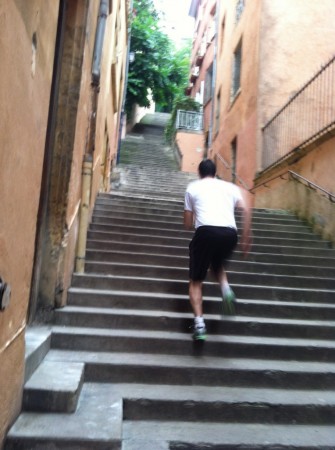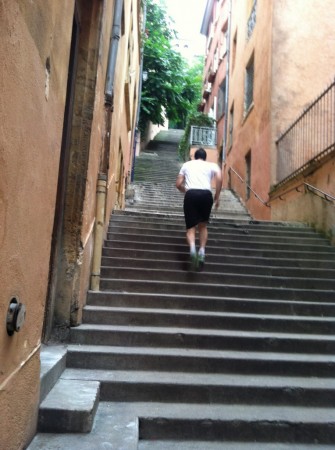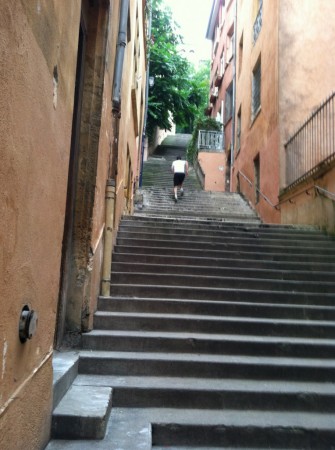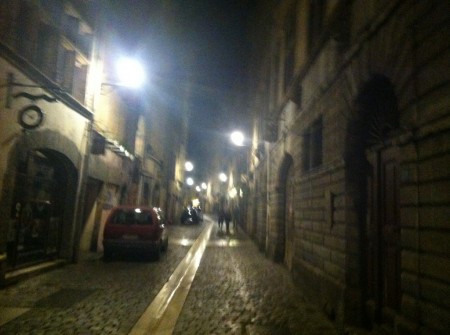 Bonjour again, this time from Lyon, France. We’re staying in an incredible sixteenth century building on a very narrow cobbled street in the old part of the city. Here’s the street–just out of the frame, on the left, would be the heavy oak door to our “hotel,” although it’s really more of a residential apartment, on the sixth floor. It’s awesome. And it has wifi. (Ah “l’ironie!”)
Bonjour again, this time from Lyon, France. We’re staying in an incredible sixteenth century building on a very narrow cobbled street in the old part of the city. Here’s the street–just out of the frame, on the left, would be the heavy oak door to our “hotel,” although it’s really more of a residential apartment, on the sixth floor. It’s awesome. And it has wifi. (Ah “l’ironie!”)
Can you see that there are a few street signs overhanging the narrow street? Maybe you can’t, but trust me—there’s a long wooden baguette signaling a bakery, and a big pair of scissors announcing a barbershop. A few centuries ago, such signs would have been on most streets, because house numbering didn’t start until the nineteenth century. There might have been an enormous tooth announcing the location of a tooth drawer, or a huge cow indicating a butcher. Barber surgeons usually just set a couple of buckets of congealed blood on either side of their doorway, to indicate their services as blood drawers.
We’ve had an action-packed couple of days. Our last day in Paris, we visited the catacombs (thanks to the recommendation of my friend, Kate Messner). They’re a huge bone repository (ossuary) and were created in the galleries of the former quarries whose stone was used to build the major sites of Paris–including the Louvre and Notre Dame. For decades, out of concern for public health (and because so many cemeteries were so overcrowded, bones kept resurfacing during heavy rains), Parisian officials had bones dug up and moved down to the catacombs. You can’t believe how many there are.
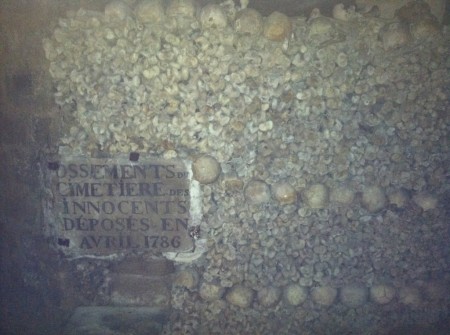 According to the website, the remains of six million Parisians, including many victims of the French Revolution, are there.
According to the website, the remains of six million Parisians, including many victims of the French Revolution, are there.
When we got to Lyon we visited two museums devoted to the silk-making trade, of which Lyon is justly famous, and the museum of decorative arts, which is situated in a magnificent seventeenth-century villa that once belonged to a wealthy Lyonaise family. They had two sedan chairs, and I got to look right inside this one: 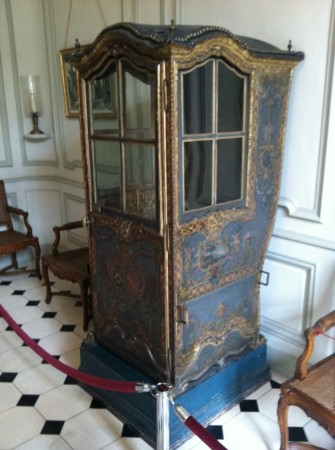 I couldn’t get a good picture, but it was lushly upholstered, with chair arms and everything. And I helpfully explained to a confused American couple that this is known as a pole screen:
I couldn’t get a good picture, but it was lushly upholstered, with chair arms and everything. And I helpfully explained to a confused American couple that this is known as a pole screen: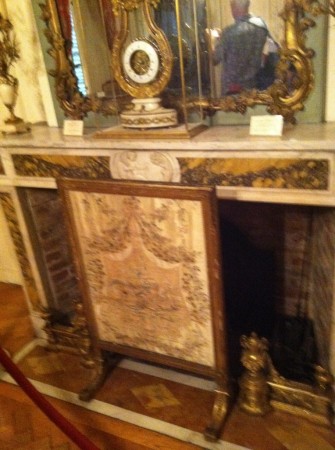 As I have blogged about before, fireplaces were pretty inefficient—blazing hot close up, but inadequate for warming much of a room even a few feet away. So people used pole screens to shield their face from the heat of the fire and to keep their waxy makeup from melting, or their patches from sliding off.
As I have blogged about before, fireplaces were pretty inefficient—blazing hot close up, but inadequate for warming much of a room even a few feet away. So people used pole screens to shield their face from the heat of the fire and to keep their waxy makeup from melting, or their patches from sliding off.
Sadly, the furnished rooms of the mansion had not a single pot de chambre. I know because I asked several of the museum docents.
We also visited the ruins of two Roman amphitheaters. Lyon was an important Roman city in Gaul, founded back in 43 BC. They called it Lugdunum. The larger amphitheater could seat over 10,000 people. Here’s Jon, standing in front of what appear to be the Sky Boxes: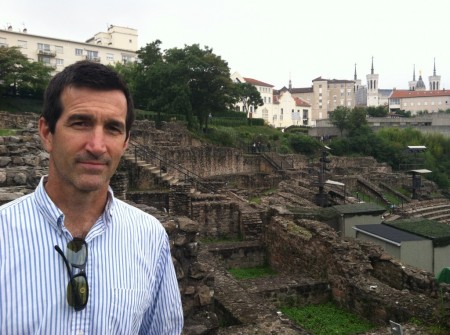 And finally, because my basketball-player husband deemed the walking we’d done not quite enough for one day (12.24 miles as clocked by my Fitbit), he decided to “aller faire du jogging.” Actually, he ran up an ancient staircase that happened to be a few feet down the street from our hotel. So as his workout, il a monter les escaliers en courant about nineteen times. Here’s proof:
And finally, because my basketball-player husband deemed the walking we’d done not quite enough for one day (12.24 miles as clocked by my Fitbit), he decided to “aller faire du jogging.” Actually, he ran up an ancient staircase that happened to be a few feet down the street from our hotel. So as his workout, il a monter les escaliers en courant about nineteen times. Here’s proof:
